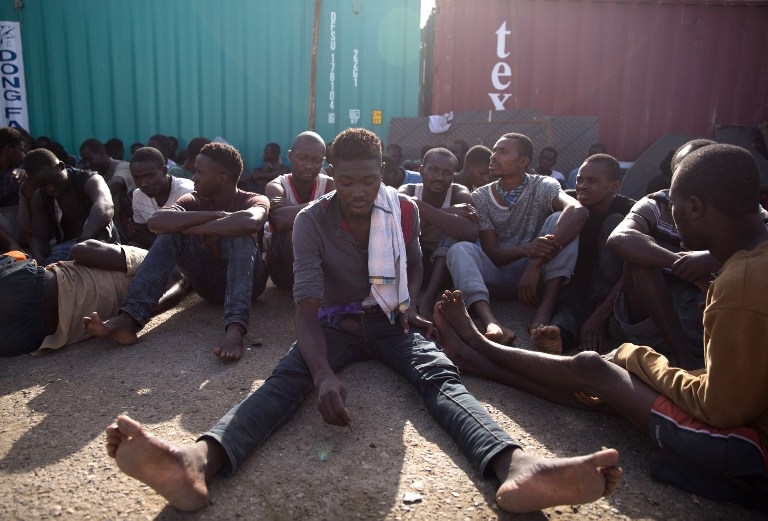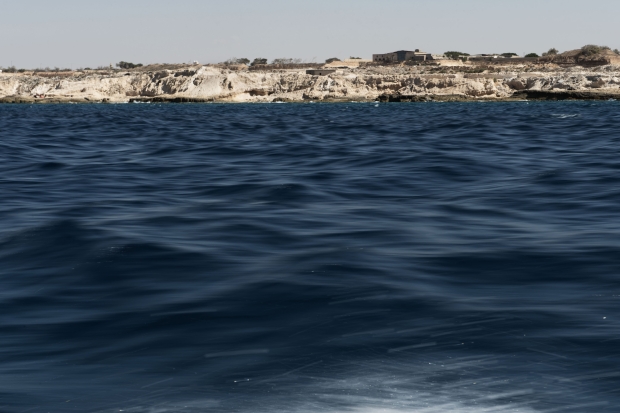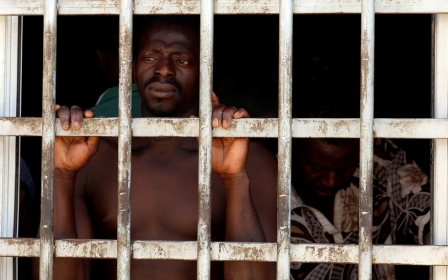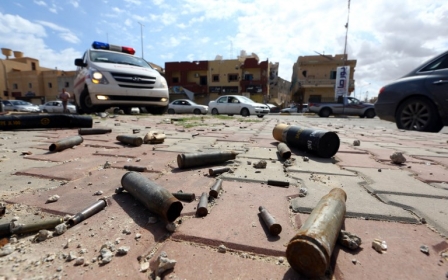Migrant crisis: Europe should stop using Libya as a dumping ground

Although it is not a new problem, the issue of migration has accelerated sharply in the past five years, and migration from mainly sub-Saharan African countries to Europe across Libya can be traced back to the year 2000.
Libya is not the only route for migration, with Morocco and Tunisia also used to a much lesser extent. The migrants come from many countries such as Nigeria, Gambia, Mali, Senegal, Sudan, Somalia, Eritrea and Ethiopia and others.
Recently migrants from Bangladesh travelling through Libya have also soared in numbers.
Migrants naively believe that by reaching Europe they will land jobs, money and a quality of life that they could only have dreamt of achieving back home
Shattered dreams
Migrants who risk their lives through thousands of miles of hazardous desert routes and dangerous sea crossings on very crowded small boats are driven by poverty, lack of jobs and persecution in their countries of origin. They believe, possibly naively, that by reaching Europe they will land jobs, money and a quality of life that they could only have dreamt of achieving back home.
However, the dreams of the majority of these people are often shattered. Europe refers to these migrants as "illegal" migrants, but others argue that seeking asylum for political or humanitarian, including economic, reasons is very much legal according to international human rights conventions and laws.
Libya is not the origin or cause of the migration problem but is sadly caught in the middle of an international migration web and a trafficking model that starts and stretches across the whole of sub-Saharan Africa to the south and beyond to Bangladesh.
The refugee detention centres in Libya are overcrowded, and authorities are struggling to cope and provide even the minimum requirements of shelter, food and medicine
There are recruiters inside the sub-Saharan countries of origin who make money from recruiting potential migrants. The city of Agadez in northern Niger is a famous hub used by African traffickers.
According to the International Organisation for Migration (IOM), which monitors checkpoints, some 270,000 people passed through Agadez on their way towards Libya between February and the end of September 2016.
The main reason why migrants prefer to cross to Europe from the north-west of Libya is simply due to geography. The Italian island of Lampedusa is less than 300km away from Tripoli.
The smugglers' network
Parts of the international trafficking model are active in the Mediterranean Sea and southern shores of Europe to the north. A network of smugglers that includes Maltese and Italian citizens as well as Libyans have been exposed recently for smuggling cheap refined fuel from Libya to southern Europe, using the same route and means of trafficking migrants.
The revelations came after a Maltese woman journalist who was investigating the illegal operations was murdered recently. The Maltese-Italian mafia accused of murdering the journalist apparently had a Libyan partner, well known for smuggling both fuel and people, who is now under arrest in Tripoli.
Yes, there are Libyan human smugglers who are exploiting the security vacuum to make easy money from putting migrants on boats to sail towards Italy. However, these will easily disappear once security has been improved by a strong central government in Libya that begins to regain control of its borders.
The European Union Commissioner for Human Rights, Nils Muiznieks, wrote to the Italian government recently warning that Italy would be breaking the European Convention on Human Rights if it had a direct role in returning migrants rescued at sea to Libya, where, the commissioner warned, they face risks of torture and inhuman treatment.
Italy has also been widely criticised recently for striking deals with armed groups in Libya accused of involvement in trafficking of migrants, whereby the same groups have been allegedly "receiving payoffs to stop the boats leaving Libya in exchange for aid, aircraft hangars and large sums of money" from Italy.
Bribing the same groups that are accused of profiteering from migrant trafficking and of being one of the causes of instability, violence and conflict in Libya is a reflection of a European migration policy in disarray.
The number of migrants crossing from Libya to Italy was indeed reduced sharply in September 2017 compared to the same month a year ago. However, the numbers crossing from Tunisia and Algeria have increased, although still insignificant compared to Libya.
As a result of this sudden sharp reduction, the number of migrants returned to the Libyan coast or already stranded in Libya has swollen significantly.
Punishing Libya
The refugee detention centres in Libya are overcrowded, and Libyan authorities are struggling to cope and provide even the minimum requirements of shelter, food and medicine.
Libya, for the past six years, has been experiencing a major conflict and lack of basic state institutions. The Libyan population at large is suffering from harsh socio-economic conditions.
The last thing Libya needs is for Europe to further burden it by returning tens of thousands of foreign migrants and expect Libya to be either a temporary or permanent home for them, thus exacerbating an already dire situation.
Libya is effectively being punished simply because of its geographical location as the most convenient route for migration and for its lack of a strong central government that can deal with the problem.
Europe is actually partly responsible for the latter, as many major European countries - including Italy and France - turned their back on the Libyan people at the end of the revolution in 2011.
Quick fixes
Europe has been looking simply for quick fixes as unpopular governments try to deal with their migration policy failures. These governments are not investing time and resources into a permanent solution by tackling the root causes of the migration problem.
One of the root causes of the problem is the huge gap in human development attainments between sub-Saharan Africa and Europe.
According to the Centre for Global Development, a think-tank in Washington DC, the flow of Africans risking everything to reach a better life in Europe will continue. The centre argues that as poor countries develop, migration rates tend to rise until annual GDP per person reaches $7,000-8,000, and most African countries are far poorer than this; for example, income per head in Gambia is only about $500 per annum.
The last thing Libya needs is for Europe to further burden it by returning tens of thousands of more foreign migrants and expect Libya to be either a temporary or permanent home for them
Ironically, while Europe is refusing entry for hundreds of thousands of unskilled poor Africans, it is also pursuing a double-standard policy in which it is fast-tracking highly educated and skilled Africans (doctors, engineers, nurses, etc), giving them work visas to migrate and work in Europe. Such a policy is in fact exacerbating the brain drain from an already suffering African continent and hampering its development.
What is needed is a holistic long-term approach to solving the international migration problem, in which the extremely rich northern hemisphere begins to help the poor sub-Saharan African countries to truly develop, through capacity building and economic growth where jobs can be created and standards of living enhanced.
Only then will there be a lasting permanent solution to a global problem. The solution is definitely not to exploit the current weaknesses in Libya and use the country as a backyard to dump and bury an essentially European problem and responsibility.
- Guma El-Gamaty is a Libyan academic and politician who heads the Taghyeer Party in Libya and is a member of the UN-backed Libyan political dialogue process.
The views expressed in this article belong to the author and do not necessarily reflect the editorial policy of Middle East Eye.
Photo: Migrants at Tripoli Commercial Port before being transported to a detention centre in Tripoli on 22 October 2016 (AFP).
This article is available in French on Middle East Eye French edition.
New MEE newsletter: Jerusalem Dispatch
Sign up to get the latest insights and analysis on Israel-Palestine, alongside Turkey Unpacked and other MEE newsletters
Middle East Eye delivers independent and unrivalled coverage and analysis of the Middle East, North Africa and beyond. To learn more about republishing this content and the associated fees, please fill out this form. More about MEE can be found here.






